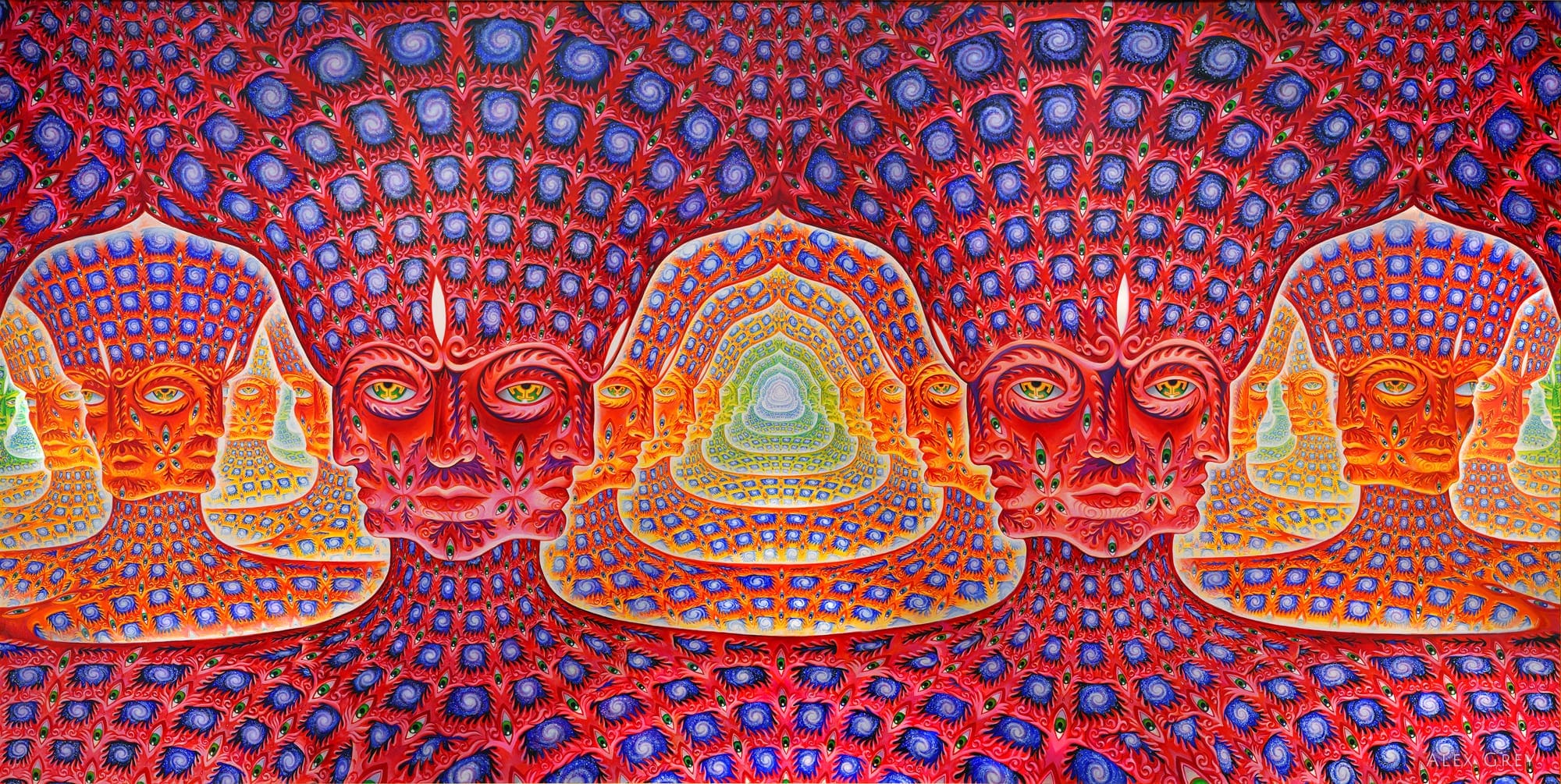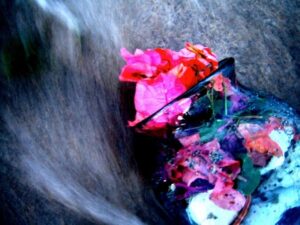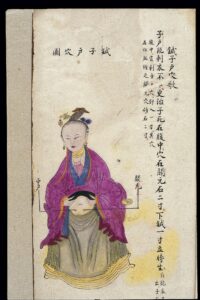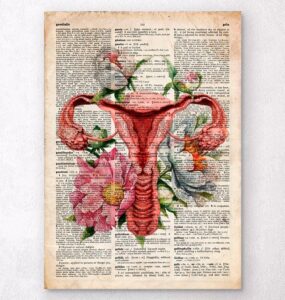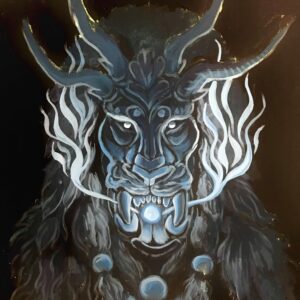TCM is founded on environmental observations, of which arose the Taijitu (YinYang symbol). Foundational to TCM is the the Four Principles of this symbol:
- 1. Opposition
- 2. Interdependence
- 3. Mutual Consumption
- 4. Intertransformation.
Also, curiously, the Taijitu is its original Mandarin Radicles: 阴 (yīn) 阳 (yáng). the radicle on the left of each is a Hill/Mound. To the left is Moon for Yin and Sun for Yang. So, classically we understand the taijitu as a hillside and a representation of the shadey and sunny sides.
So we can understand Internal and External disease in this way, that chronic fatigue which began as Lymes’ disease is very similar to the chronic fatigue due to adrenal insufficiency. Therefore treatment protocol would also be different. To keep it simple, I wish to lay down some foundations: TCM has a long history of Clinical Efficacy and is founded on an Indigenous language which speaks about one in relation to: the world/others. Unlike merchent languages like English which relate in terms of this, that or how much. Unfortunatly this indigenous language has been colonized, for in 1742 Christian missionaries through a trick of chemicals, convinced Chinese high-officials that Qi was a thing and a noun. It is a constant reminder in my own colonized mind to read and understand TCM as much as I can within the Cultural and Historical frame it was birthed.
The pictures below expand on the brief mention I made of the Seven Emotions. These are not to be confused with the 5-Element theory. This theory has clouded Westerners understanding of TCM, it was created in terms of herbal formulas. For ex: Bitter is the flavour of the Heart and Small Intestine because heat tends to first harrass the Heart and the easiest way to drain it is with Bitter and guide herbs to exit via the Small Intestine.
The Seven Emotions are derived from the very beginning of TCM which was highly superstitious and dealt with demonology. (1300 BCE: Results of Divination are recorded on Oracle Bones and represent the earliest example of Chinese Characters). More on that later. Remember, this is an Indigenous language and much of its’ communication is in terms of ‘This One Of’ aka. self as inextricably linked to external. For now, know this corollary: “The original heart is satisfaction, original lung is acceptance, original spleen is reflection, original liver is concentration/purpose, original kidneys is instinct. “
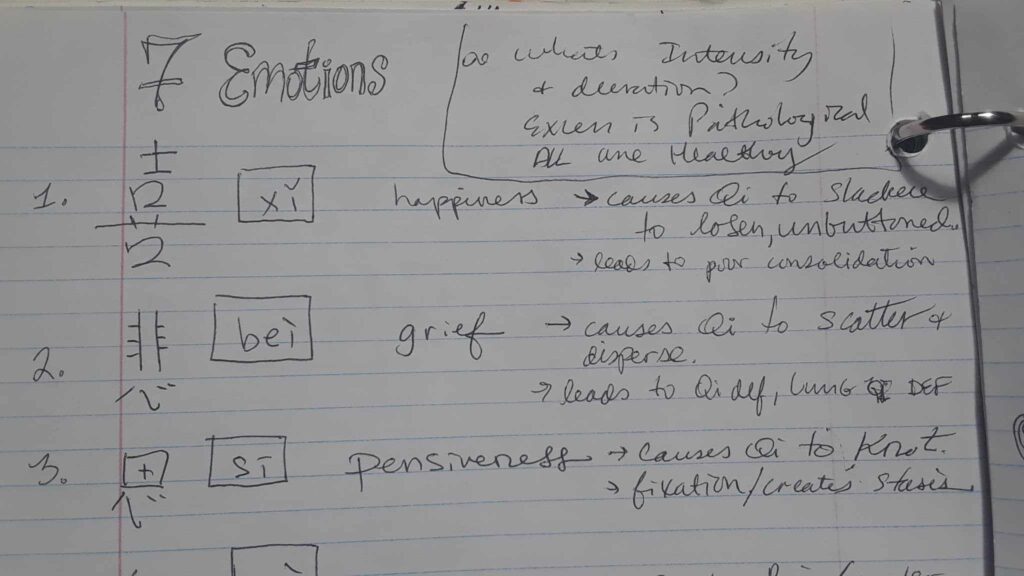
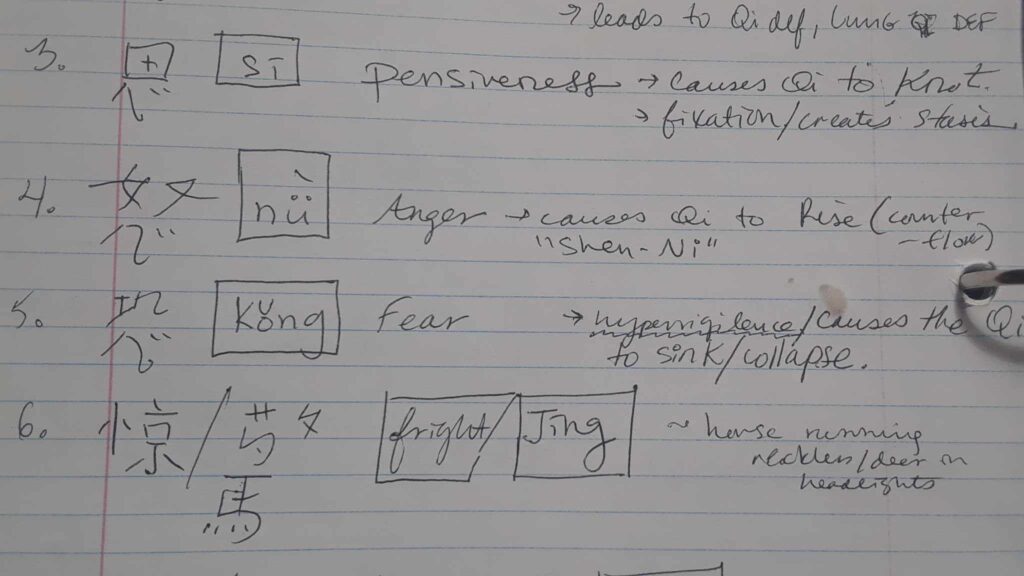
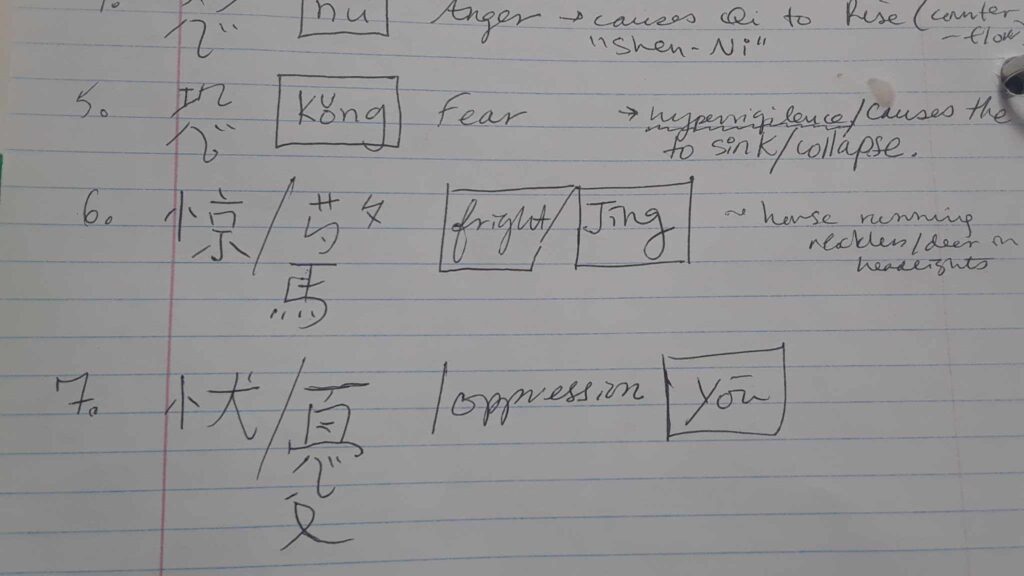
*Note that what makes Any of these pathological is the intensity and/or duration. Aka. excess is Pathological. All these emotions in moderation are healthy parts of being alive, as is the above Quote about ‘Original Corollaries’
Pt.2:
Ooops! I said Demonology was the basis for the 7 Emotions in my recent blurb. That is not an accurate description.
Demonology is confined within a European context which largely personifies a Demon, the Fae or Ghosts as seperate entities. Where the 7 Emotions arose is similar only in the understanding that shapeshifting Spirits are inherent in natural forces and/or as the unprocessed emotions your, for example, grandfather took to the grave which live on by haunting you. These spirits are not sentient beings and more an energetic contention thriving on disorientation. I wish to understand the context of TCM for what it is instead of colonizing it further with Euro-centric and English labels.
Have you ever held a grudge? Do you remember how much energy went into that grudge? The 7 Pò 魄 are contentious holding patterns, dampening our adaptive potential/resilence and motivating maladaptive behaviour. This dampening depends on pathological expression of emotion (intensity and duration since any emotion is healthy considering the context). The holding pattern permits the internal contention to play out in a feedback loop keeping us entangled in our own subjective mire. The 7 Pò are as follows:
Feī Dú ‘The poisen of No’ Resides under the diaphragm: A long-term tendency to Anger.
Innate essence: Jīng 精 aka. Unspecified Potential
Chū Haì ‘Unclean Shame’ Found Below Diapragm: Low Self-Esteem, Over-thinking, Self-Doubt.
Innate essence: Qì 气 aka. within context of: Circulation, Communication, Influence etc. A Quality of…
Choù Fèi ‘Stinking Lungs’ Posterior to SHĀNZHŌNG (‘Chest Center’ Ren-17) Denial of Change/Constant of Universe: Grief, Sadness, Disappointment.
Innate essence: Shén 神 aka. Space of Consciousness in which Experiance passes.
Shī Goǔ ‘Corpse Dog’ Posterior to Navel: Depression, Self-Contempt, Loneliness.
Innate essence: Yīn 阴 aka. Substrate of Interaction
Fú Fù ‘Fallen Father’ Middle-Posterior (where Thoracic vertabrae meets the Lumbar): Oppression, Disconnection from Motivation.
Innate essence: Yáng 阳 aka. Impetuous Vivacity
Què Yīn ‘Night Bird’ Below BǍIHUÌ (‘Hundred Meetings’ Du-20): Over-striving with obsession, excess Joy.
Innate essence: Xìng 性 aka. Pre-conditioned Consciousness
Tǎn Zéi ‘Sipping Thief’ Superior to YǑNGQUǍN (‘Bubbling Spring’ KD-1): Despair that devours vitality, can be a precursor to Oppression, Panic Attacks. Innate essence: Shoù 寿 aka. Longevity
*Note that the 7 Pò also includes an Innate Essences: the above mentioned contentious 7 Pò latch on and feed off. The Innate Essences associated are healthy aspects of self which can get highjacked into maladaptive functions. (ie. where anger/assertiveness are in flow with life, not a tendency)
To gain a more intimate understanding of the 7 Pò 魄 you may refer to my related articles. If you would like to dive deeper into the process of freeing yourself from such Po, I am available to help you through that.
Art: Net of Being by Alex Grey
